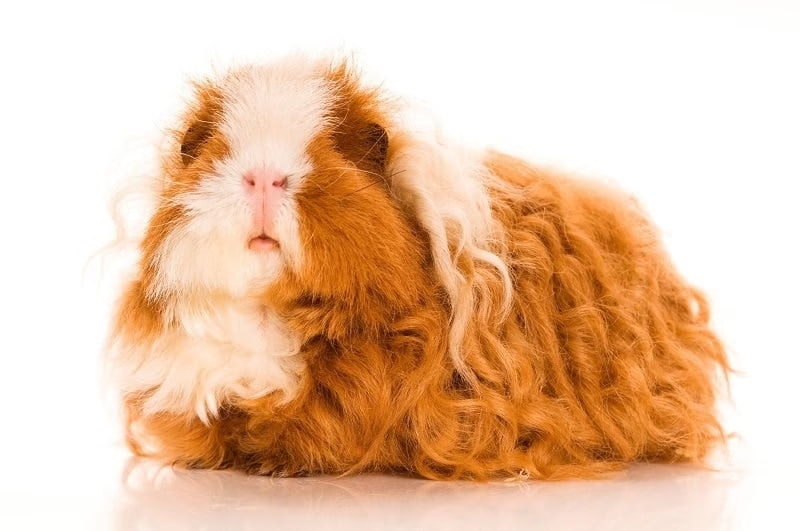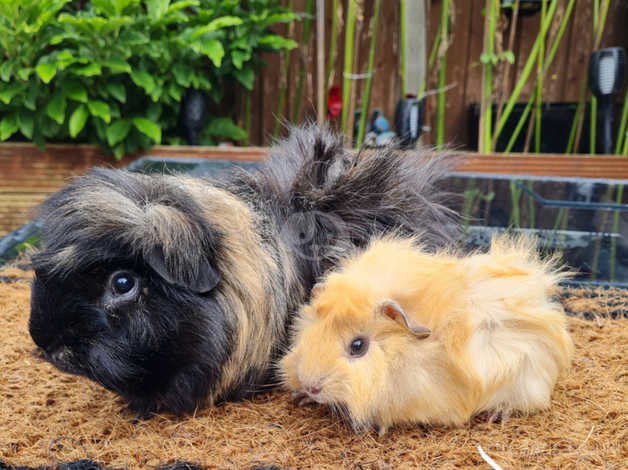Texel Guinea Pigs: Unraveling the Charm of Curly-Coated Companions
Definition and Brief Overview of Texel Guinea Pigs
Texel guinea pigs are a unique breed known for their distinctive long, curly coats. Originating from a genetic mutation, Texels have become popular among guinea pig enthusiasts for their charming appearance and friendly demeanor.
Importance of Texel Guinea Pigs in the World of Small Pets
Texel guinea pigs play a significant role in the world of small pets due to their unique characteristics and appeal. Their fluffy coats and endearing personalities make them sought after by pet owners looking for a special companion.
Purpose of the Article – To Provide Comprehensive Information About Texel Guinea Pigs
The purpose of this article is to offer detailed and comprehensive information about Texel guinea pigs. From their physical traits to their care requirements and beyond, readers will gain a thorough understanding of what it takes to care for and enjoy the company of these delightful creatures.
Physical Characteristics of Texel Guinea Pigs
A. Unique Coat Texture and Appearance
Texel guinea pigs are renowned for their distinctively long, curly coats. Unlike other guinea pig breeds, Texels have curls that cover their entire bodies, giving them a soft and fluffy appearance. The curls can vary in tightness and length, adding to their charm.
B. Body Structure and Size
In terms of body structure, Texel guinea pigs typically have a compact and rounded body shape with short legs. They are generally medium-sized guinea pigs, with adult males weighing between 2.5 to 3.5 pounds (1.1 to 1.6 kilograms) and adult females slightly smaller, ranging from 2 to 3 pounds (0.9 to 1.4 kilograms).
C. Color Variations
Texel guinea pigs come in a wide range of colors and patterns. Common color variations include solid colors such as white, black, cream, and brown, as well as bi-color, tri-color, and multi-color combinations. Additionally, Texels can exhibit markings such as roan, dalmatian, and tortoiseshell, further enhancing their visual appeal.
Origins and History of Texel Guinea Pigs
A. Development of Texel Breed
The Texel guinea pig breed originated from a genetic mutation that led to the development of their unique long, curly coats. The mutation likely occurred spontaneously within the guinea pig population, and breeders selectively bred these individuals to establish the Texel breed. Through careful breeding practices, breeders aimed to maintain and enhance the distinctive curly coat trait while ensuring the health and well-being of the guinea pigs.
B. Geographic Origins
The Texel guinea pig breed is believed to have originated in Europe, specifically on the Isle of Texel in the Netherlands. This island, known for its agriculture and livestock, likely served as the initial breeding ground for Texel guinea pigs. Over time, the breed gained popularity not only in Europe but also in other parts of the world, including North America and Asia.
C. Popularity and Recognition in the Guinea Pig Community
Texel guinea pigs have gained significant popularity and recognition within the guinea pig community due to their unique and visually striking appearance. Their long, curly coats set them apart from other guinea pig breeds, attracting attention from enthusiasts and breeders alike. Texels are often showcased in guinea pig shows and exhibitions, where their distinctive features are admired and celebrated. As a result, the breed has earned a prominent place in the hearts of guinea pig lovers worldwide.
Texel Guinea Pig Care and Maintenance
A. Housing Requirements
Texel guinea pigs require a spacious and well-ventilated enclosure to thrive. The cage should be large enough to accommodate their active nature, with plenty of room for exploration and exercise. A solid-bottom cage with a wire mesh top is recommended to prevent escape and provide a comfortable surface for their delicate feet. Additionally, the cage should be lined with soft bedding, such as fleece liners or paper-based bedding, to keep them cozy and absorb waste.
B. Dietary Needs and Feeding Guidelines
Texel guinea pigs have specific dietary needs to maintain their health and well-being. Their diet should consist mainly of high-quality hay, such as Timothy hay, which provides essential fiber for proper digestion. Additionally, they require fresh vegetables, such as leafy greens and bell peppers, to supplement their diet with vitamins and minerals. A small amount of pelleted guinea pig food can also be offered daily to ensure they receive all the necessary nutrients. Fresh water should always be available, provided in a sturdy water bottle or dish.
C. Grooming Techniques for Their Distinct Coats
Texel guinea pigs require regular grooming to keep their long, curly coats in good condition. Gently combing their fur with a soft-bristled brush or a wide-toothed comb can help prevent matting and tangles. It’s essential to be gentle during grooming to avoid causing discomfort or skin irritation. Additionally, occasional baths may be necessary to keep their coats clean, using a mild shampoo specifically formulated for small animals. After bathing, thorough drying is crucial to prevent chilling and skin problems.
D. Exercise and Playtime Considerations
Texel guinea pigs are active animals that require daily exercise and mental stimulation. Providing opportunities for playtime outside of their cage in a safe and supervised environment is important for their physical and mental health. This can include a designated play area with tunnels, hideouts, and toys for enrichment. Additionally, providing a variety of chew toys helps keep their teeth healthy and prevents boredom.
E. Health Concerns and Preventive Care
Texel guinea pigs are generally robust and healthy animals, but they are susceptible to certain health issues common to the breed. Regular veterinary check-ups are essential to monitor their overall health and catch any potential problems early. Common health concerns for Texel guinea pigs include dental issues, respiratory infections, and skin problems. Providing a balanced diet, proper hygiene, and a clean living environment are crucial for preventing health problems and ensuring a happy and healthy life for Texel guinea pigs.
Temperament and Behavior of Texel Guinea Pigs
A. Social Behavior and Interactions with Humans
Texel guinea pigs are known for their friendly and sociable nature. They enjoy human companionship and often form strong bonds with their owners. These guinea pigs thrive on attention and affection, eagerly interacting with their human caregivers. With proper socialization and handling, Texels can become affectionate pets that enjoy being held, cuddled, and played with.
B. Handling Tips and Recommendations
When handling Texel guinea pigs, it’s essential to approach them gently and confidently. Supporting their body with both hands, scoop them up from underneath, and hold them close to your chest to provide a sense of security. Avoid sudden movements or loud noises that may startle them. Regular, gentle handling from a young age helps Texels become accustomed to human touch and promotes trust and bonding between pet and owner.
C. Compatibility with Other Pets
Texel guinea pigs are generally sociable animals that can get along well with other guinea pigs and compatible pets. When introducing Texels to other guinea pigs, it’s essential to do so gradually and in a neutral territory to prevent territorial disputes. Supervision is necessary during the initial introduction period to ensure peaceful coexistence. Texel guinea pigs can also form bonds with other small pets, such as rabbits or well-behaved cats and dogs, but introductions should always be supervised to ensure the safety of all animals involved.
Breeding and Reproduction
A. Breeding Considerations for Texel Guinea Pigs
Breeding Texel guinea pigs requires careful consideration and planning to ensure the health and well-being of both the parent guinea pigs and their offspring. It’s essential to select breeding pairs with desirable traits, such as healthy genetics and proper conformation to the breed standard. Avoid breeding guinea pigs with known health issues or genetic abnormalities to prevent passing on undesirable traits to the offspring.
B. Pregnancy and Birth Process
The gestation period for Texel guinea pigs typically lasts between 59 to 72 days, with an average of around 65 days. During pregnancy, it’s essential to provide pregnant guinea pigs with a nutritious diet rich in hay, fresh vegetables, and pelleted food to support their increased nutritional needs. Pregnant guinea pigs should also have a comfortable and secure nesting area within their enclosure, lined with soft bedding for the birth process.
Guinea pig births, known as “litters,” usually consist of 1 to 4 pups, although larger litters are possible. The birth process is usually straightforward, with the mother guinea pig delivering each pup within a few minutes to an hour apart. Newborn Texel guinea pigs are born fully furred, with their eyes open, and are capable of moving around shortly after birth. It’s crucial to monitor the mother and pups closely during and after the birth process to ensure the health and safety of all involved.
C. Care for Pregnant Guinea Pigs and Newborns
During pregnancy, pregnant guinea pigs should receive regular veterinary check-ups to monitor their health and ensure a successful pregnancy. Provide the pregnant guinea pig with a calm and stress-free environment, minimizing disturbances to reduce the risk of complications.
After birth, ensure that the mother guinea pig has access to plenty of food and water to support her increased nutritional needs during lactation. Monitor the newborn pups closely to ensure they are nursing and gaining weight appropriately. It’s essential to handle newborn guinea pigs gently and minimally during the first few days to allow them to bond with their mother and adjust to their new environment.
If any concerns arise regarding the health or well-being of the mother or newborns, consult with a veterinarian experienced in guinea pig care for guidance and assistance. Proper care and attention during the breeding and birthing process are essential for the health and success of Texel guinea pigs and their offspring.



